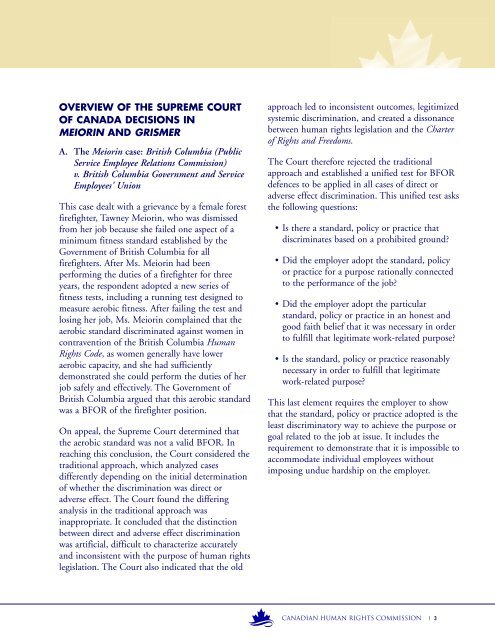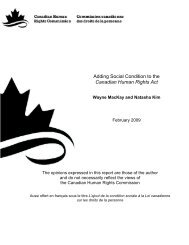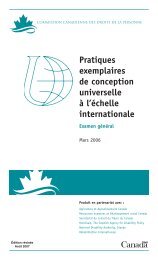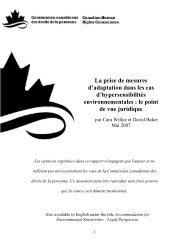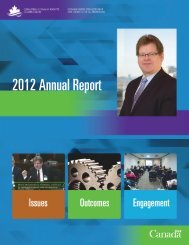Bona Fide Occupational Requirements
Bona Fide Occupational Requirements
Bona Fide Occupational Requirements
- No tags were found...
You also want an ePaper? Increase the reach of your titles
YUMPU automatically turns print PDFs into web optimized ePapers that Google loves.
OVERVIEW OF THE SUPREME COURTOF CANADA DECISIONS INMEIORIN AND GRISMERA. The Meiorin case: British Columbia (PublicService Employee Relations Commission)v. British Columbia Government and ServiceEmployees' UnionThis case dealt with a grievance by a female forestfirefighter, Tawney Meiorin, who was dismissedfrom her job because she failed one aspect of aminimum fitness standard established by theGovernment of British Columbia for allfirefighters. After Ms. Meiorin had beenperforming the duties of a firefighter for threeyears, the respondent adopted a new series offitness tests, including a running test designed tomeasure aerobic fitness. After failing the test andlosing her job, Ms. Meiorin complained that theaerobic standard discriminated against women incontravention of the British Columbia HumanRights Code, as women generally have loweraerobic capacity, and she had sufficientlydemonstrated she could perform the duties of herjob safely and effectively. The Government ofBritish Columbia argued that this aerobic standardwas a BFOR of the firefighter position.On appeal, the Supreme Court determined thatthe aerobic standard was not a valid BFOR. Inreaching this conclusion, the Court considered thetraditional approach, which analyzed casesdifferently depending on the initial determinationof whether the discrimination was direct oradverse effect. The Court found the differinganalysis in the traditional approach wasinappropriate. It concluded that the distinctionbetween direct and adverse effect discriminationwas artificial, difficult to characterize accuratelyand inconsistent with the purpose of human rightslegislation. The Court also indicated that the oldapproach led to inconsistent outcomes, legitimizedsystemic discrimination, and created a dissonancebetween human rights legislation and the Charterof Rights and Freedoms.The Court therefore rejected the traditionalapproach and established a unified test for BFORdefences to be applied in all cases of direct oradverse effect discrimination. This unified test asksthe following questions:• Is there a standard, policy or practice thatdiscriminates based on a prohibited ground?• Did the employer adopt the standard, policyor practice for a purpose rationally connectedto the performance of the job?• Did the employer adopt the particularstandard, policy or practice in an honest andgood faith belief that it was necessary in orderto fulfill that legitimate work-related purpose?• Is the standard, policy or practice reasonablynecessary in order to fulfill that legitimatework-related purpose?This last element requires the employer to showthat the standard, policy or practice adopted is theleast discriminatory way to achieve the purpose orgoal related to the job at issue. It includes therequirement to demonstrate that it is impossible toaccommodate individual employees withoutimposing undue hardship on the employer.| 3


